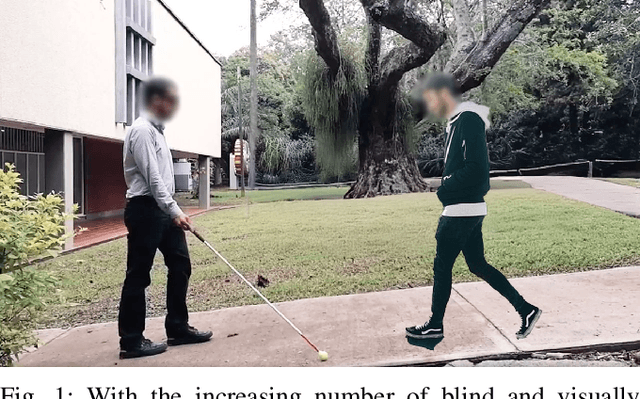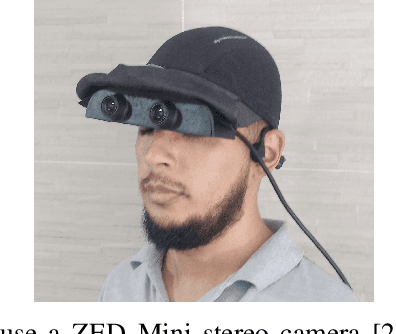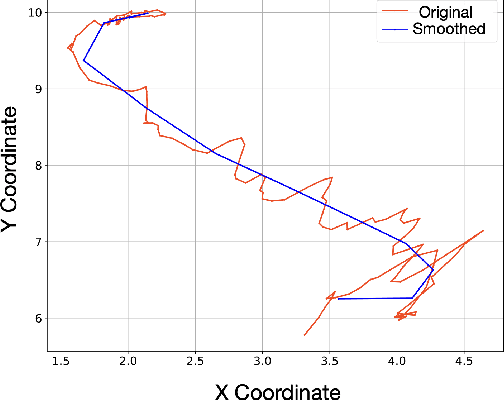Celine Demonsant
Unified Human Localization and Trajectory Prediction with Monocular Vision
Mar 05, 2025Abstract:Conventional human trajectory prediction models rely on clean curated data, requiring specialized equipment or manual labeling, which is often impractical for robotic applications. The existing predictors tend to overfit to clean observation affecting their robustness when used with noisy inputs. In this work, we propose MonoTransmotion (MT), a Transformer-based framework that uses only a monocular camera to jointly solve localization and prediction tasks. Our framework has two main modules: Bird's Eye View (BEV) localization and trajectory prediction. The BEV localization module estimates the position of a person using 2D human poses, enhanced by a novel directional loss for smoother sequential localizations. The trajectory prediction module predicts future motion from these estimates. We show that by jointly training both tasks with our unified framework, our method is more robust in real-world scenarios made of noisy inputs. We validate our MT network on both curated and non-curated datasets. On the curated dataset, MT achieves around 12% improvement over baseline models on BEV localization and trajectory prediction. On real-world non-curated dataset, experimental results indicate that MT maintains similar performance levels, highlighting its robustness and generalization capability. The code is available at https://github.com/vita-epfl/MonoTransmotion.
HEADS-UP: Head-Mounted Egocentric Dataset for Trajectory Prediction in Blind Assistance Systems
Sep 30, 2024



Abstract:In this paper, we introduce HEADS-UP, the first egocentric dataset collected from head-mounted cameras, designed specifically for trajectory prediction in blind assistance systems. With the growing population of blind and visually impaired individuals, the need for intelligent assistive tools that provide real-time warnings about potential collisions with dynamic obstacles is becoming critical. These systems rely on algorithms capable of predicting the trajectories of moving objects, such as pedestrians, to issue timely hazard alerts. However, existing datasets fail to capture the necessary information from the perspective of a blind individual. To address this gap, HEADS-UP offers a novel dataset focused on trajectory prediction in this context. Leveraging this dataset, we propose a semi-local trajectory prediction approach to assess collision risks between blind individuals and pedestrians in dynamic environments. Unlike conventional methods that separately predict the trajectories of both the blind individual (ego agent) and pedestrians, our approach operates within a semi-local coordinate system, a rotated version of the camera's coordinate system, facilitating the prediction process. We validate our method on the HEADS-UP dataset and implement the proposed solution in ROS, performing real-time tests on an NVIDIA Jetson GPU through a user study. Results from both dataset evaluations and live tests demonstrate the robustness and efficiency of our approach.
 Add to Chrome
Add to Chrome Add to Firefox
Add to Firefox Add to Edge
Add to Edge